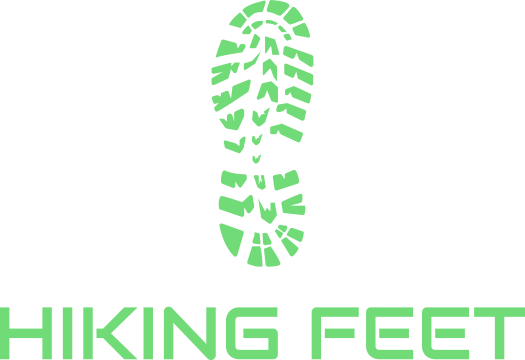Yes, you can use trail running shoes for hiking. Many hikers now choose trail running shoes as a lightweight alternative to traditional hiking boots and hiking shoes. However, trail runners are made for running—not hiking—which means hikers need to choose them carefully. For hiking, you should choose trail running shoes that are lighter than true hiking shoes yet still sturdy enough to stand up to the rigors of hiking or ultralight backpacking. As an avid hiker who use to manage footwear at an outdoor gear shop, I've personally worn, sold, tested, and reviewed most of the top trail runners. In 2025, the best trail running shoes for hiking are the
- Topo Athletic Ultraventure 4
- Salmon Ultra Glide 2
- HOKA Speedgoat 6
- Altra Lone Peak 9
- Topo Athletic Traverse
- Salomon Thudercross
- LOWA Fortux
- Salomon XA Pro
- Brooks Cascadia 18
- Mammut Sertig II
Best Trail Running Shoes for Hiking
My list has organized the top trail runners for hikers from lightest (top) to most supportive (bottom). To pick the best trail running shoe for your hikes, you should focus on fit and decide how much you value weight savings vs. support.
Some hikers—especially thru-hikers—value weight savings over everything else. At the same time, cutting weight generally costs you in support, protection, durability, and sometimes cushioning, too. On the flipside, some people are looking from trail running shoes that are almost as supportive as hiking shoes. However—with a couple exceptions—the most supportive trail running shoes weigh several ounces more than the shoes above them.
Like most outdoor gear decisions, you need to weigh the trade-offs.
My mini-reviews below will help you choose the best trail running shoes for your feet and your hiking style:
TOPO ATHLETIC ULTRAVENTURE 4
Ultralight Trail Running Shoe for Thru-Hiking
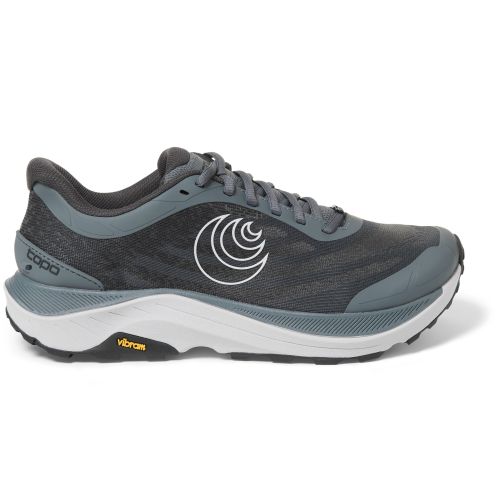
Main Benefits:
My Ultraventure 4s weigh less than 12 ounces (men's size 12)—and are the cushiest trail runners that I've tested and reviewed, too. Made for ultra-marathoners, the Topo Athletic Ultraventure 4 features plush cushioning and the "Topo Fit" that podiatrists love. Topos encourage a more natural stride with low heel-to-toe drop, a more secure fit in the midfoot than Altra, and wide toe boxes that put toes in a strong and relaxed position. For me, the wide toe box, low weight, and cushioning are three standout features for the Ultraventure 4. The downside is that this welterweight isn't as protective or durable as the sturdier shoes on this list. Topo's best-selling shoe, the Ultraventure is one of the best trail running shoes for long distance hikers and day hikers who don't need much protection for the trails they hike.
For more, see my full Ultraventure 4 review
Best Fit
standard to wide feet,
natural fit/wide toe box fans
Best Match
fast-and-light hikers, thru-hikers, max cushion fans
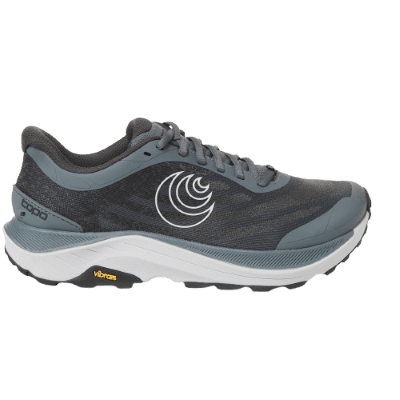
Men's Topo Ultraventure 4
Check current price, styles, and colors:
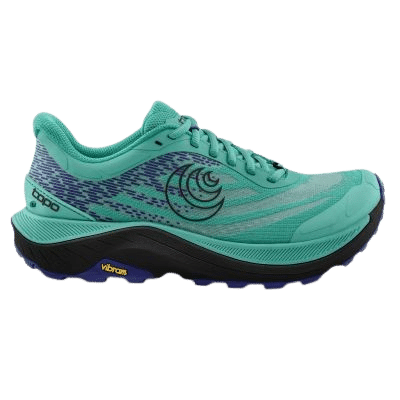
Women's Topo Ultraventure 4
Check current price, styles, and colors:
SALOMON ULTRA GLIDE 2
Ultralight & Cushy Trail Running Shoe
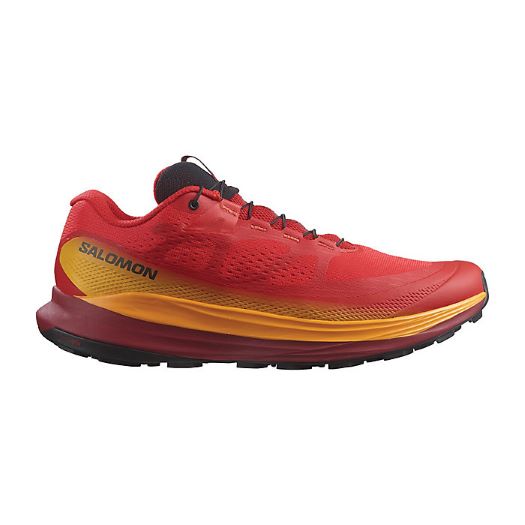
Main Benefits:
The Salomon Ultra Glide 2 is another super-cushy, welterweight trail running shoe that's hikeable on well-maintained trails. This one's made for fast hikers with light packs or total cushion sluts who want more float than feel underfoot. Ultra Glides are not as stiff or as narrow as most Salomons, which may appeal to men and women who prefer a softer ride and roomier fit. At the same time, this shoe still has some backbone. In Pennsylvania, I wore my Ultra Glides for fast hikes on casual trails. In New Mexico, I wear them to hike the desert wash behind my house and to fly up and down weathered granite trails on my fitness hikes in the Sandia Mountains. I recommend this lightweight trail runner to thru-hikers and casual hikers who prioritize weight savings and cushioning over other features.
For more, see my full Ultraglide 2 review
best fit
standard to wide feet,
available in wides
best match
fast-and-light hikers, thru-hikers, max cushion fans
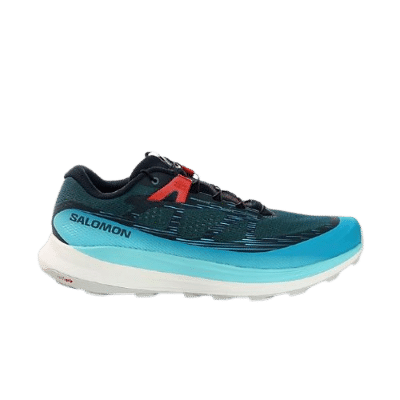
Men's Salomon Ultra Glide 2
Check current price, styles, and colors:
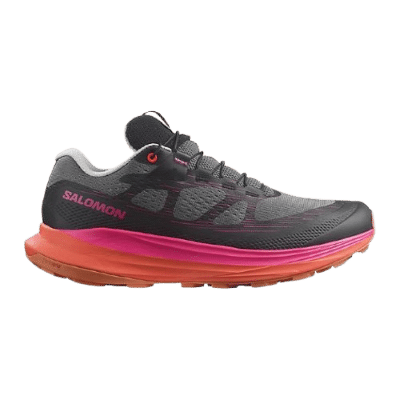
Women's Salomon Ultra Glide 2
Check current price, styles, and colors:
HOKA SPEEDGOAT 6
Max-Cushion Trail Running Shoe
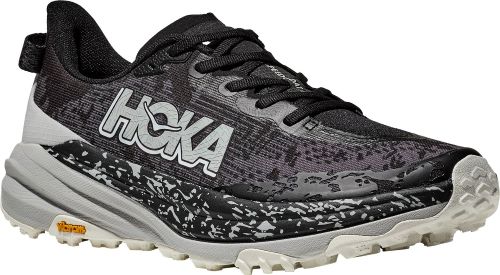
Main Benefits:
The Speedgoat is the most popular HOKA for hikers— and the top-selling trail runner in the U.S. That marshmallowy mound of EVA foam is mostly there for comfort and shock absorption. Still, it doles out more support than you might expect from such a light and cushy trail shoe. Surprisingly, this is the lightest trail runner on this list, and it's in the top half for support, too. I like the new Speedgoat 6 (which I wore a couple hours ago to hike the Sangre de Cristo Mountains). However, it's not quite as soft as older Speedgoats (or the shoes above). If you crave cushioning, however, the Speedgoat clearly stands out as one of the best trail running shoe for hiking.
For more, see my full Speedgoat 6 review
Best Fit
standard to wide feet,
wide sizes available
Best Match
day hikers, thru-hikers,
max-cushion fans
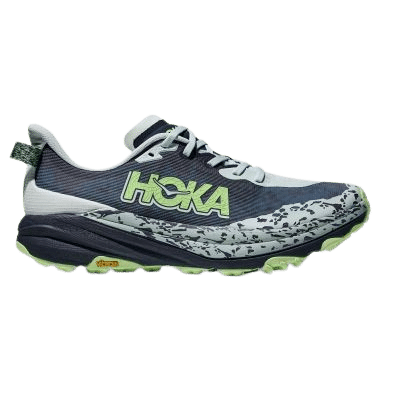
Men's HOKA Speedgoat 6
Check current price, styles, and colors:
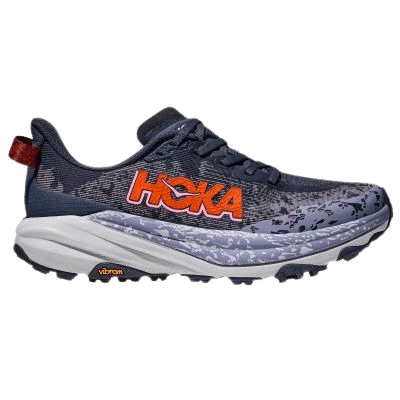
Women's HOKA Speedgoat 6
Check current price, styles, and colors:
ALTRA LONE PEAK 9
Zero Drop Trail Running Shoe

Main Benefits:
Altra's philosophy isn't for everybody, but many hikers are hooked on Altras—and religiously buy Lone Peak after Lone Peak. Some hikers swear by Altra's "zero drop" platforms (with no added cushioning under the heel/mid-foot) and wide, Footshaped toe boxes, which make men and women lean on their body's natural cushioning and support mechanisms. Long distance hikers, in particular, like that roomy fit and the way these shoes dry quickly when they get wet. Altras don't make sense for people who prefer more supportive trail shoes or more conventional fits. (I had troubles with strained calves, shin splints, and rolled ankles when I personally tested the Lone Peak.) However, the Lone Peak is popular pick for thru-hikers and athletic hikers who prefer less supportive shoes that develop their lower bodies.
Disclosure: I have personally tested and reviewed previous versions of this shoe but not the new Lone Peak 9.
Best Fit
standard to wide feet,
wide sizes available
Best Match
thru-hikers,
zero drop fans

Men's Altra Lone Peak 9
Check current price, styles, and colors:
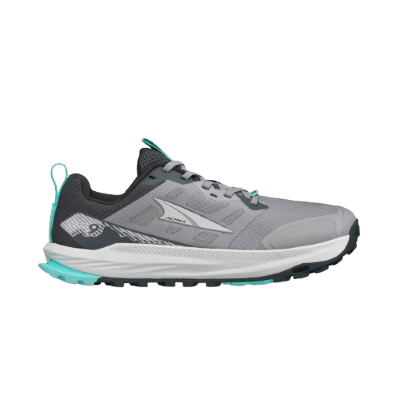
Women's Altra Lone Peak 9
Check current price, styles, and colors:
TOPO ATHLETIC TRAVERSE
Thru-Hiking Shoe with Natural Fit
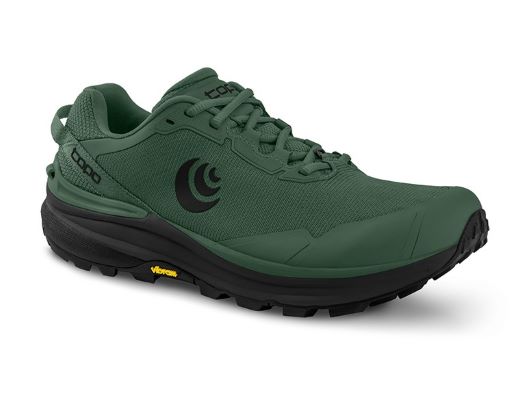
Main Benefits:
New in 2024, the Topo Athletic Traverse is a trail running shoe that's specifically designed for long-distance thru-hiking. The Traverse is a little more supportive than the Ultraventure and Lone Peak above with firmer cushioning and the signature "Topo Fit"—low (5mm) drop, a secure fit in the mid-foot, and roomy toe box—for a more natural stride. The Topo Traverse has kept its weight in check while adding some support in the heel and midfoot, providing a moderately high stack height for shock absorption, and opting for Vibram Megra Grip outsoles for premium trail traction. It's also optimized to drain water and dry quickly, helping thru-hikers who don't take many zero days to let their shoes dry out. I'm not a thru-hiker, but I love the Traverse's roomy fit and regularly wear them for my mid-week hikes.
For more, see my full Topo Traverse review
Best Fit
standard to wide feet,
natural fit fans
Best Match
thru-hikers, fast-and-light hikers, wide toe box fans
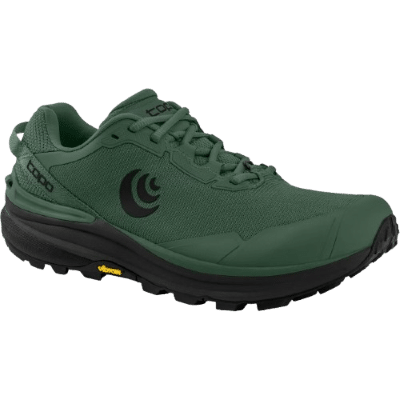
Men's Topo Athletic Traverse
Check current price, styles, and colors:

Women's Topo Athletic Traverse
Check current price, styles, and colors:
SALOMON THUNDERCROSS
Do-it-all Trail Running Shoe for Hiking

Main Benefits:
The Salomon Thundercross is a do-it-all trail running shoe. It's supportive, lightweight, low drop, and max cushion—all at the same time. Like its cousin the Speedcross, the Thundercross features aggressive lugs that dig into mud and loose surfaces, but it's stacked with much more cushioning and a roomier fit than most Salomon shoes. This versatile trail running shoe for hikers is available in either a non-waterproof or GORE-TEX version for multi-season wear and comes in both standard and wide sizes. I wear the GORE-TEX version of the Thundercross for wet weather and winter hiking. Personally, this is probably my favorite trail running shoe for hiking after two years of first-hand experience.
For more, see my full Salomon Thundercross review
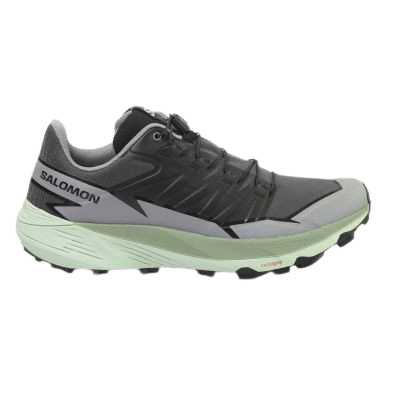
Men's Salomon Thundercross
Check current price, styles, and colors:
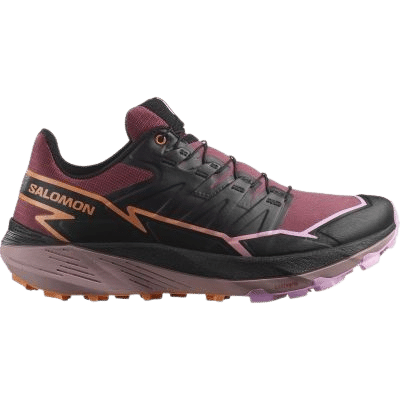
Women's Salomon Thundercross
Check current price, styles, and colors:
LOWA FORTUX
Light & Supportive Trail Running Shoe

Main Benefits:
The sturdiest of the three trail running shoes that LOWA debuted late in 2023, the Fortux impresses with its mix of weight savings and support. Made for long distance trail runs, the LOWA Fortux is stiffer than my other trail runners—with plenty of backbone for tougher terrain—but also packs in plenty of cushioning. Even so, it's still relatively lightweight. Usually, hikers need to choose support OR weight savings and float OR feel. However, the Fortux is both supportive AND lightweight with good cushioning AND good trail feel. This shoe crushed it on my test hikes—and immediately earned its place among the best trail running shoes for hiking.
For more, see my full LOWA Fortux review
Best Fit
standard feet
Best Match
moderate to difficult trails
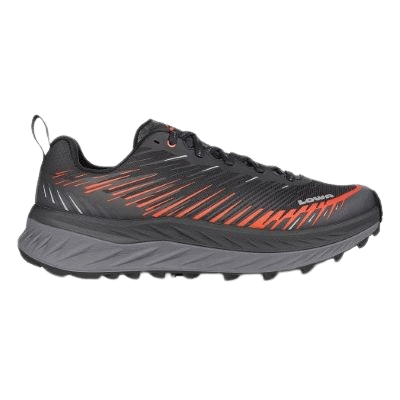
Men's LOWA Fortux
Check current price, styles, and colors:
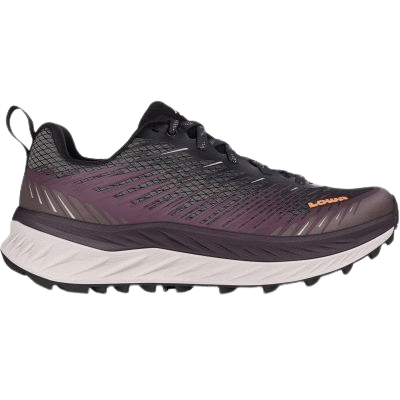
Women's LOWA Fortux
Check current price, styles, and colors:
SALOMON XA Pro
Traditional Trail Running Shoe for Hiking
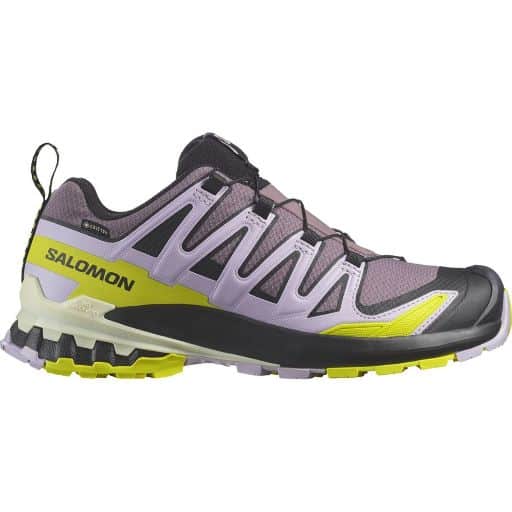
Main Benefits:
Salomon may classify the XA Pro as a running shoe, but men and women have been buying it as a hiking shoe for many years. This oldie-but-goodie is moderately stiff with a protective chassis adding some foot support and lateral stability. Even though it's one of the heavier shoes on this list, it's still lighter than the best hiking shoes. Available in a non-waterproof or GORE-TEX style, this trail runner features moderate cushioning, moderate traction, and a time-tested quick-lace system. The Salomon XA Pro may be a good choice for men and women who want a more supportive trail running shoe. I've personally owned several pairs of XA Pros since 2012, wearing them for day hikes, urban trails, and traveling.
Best Fit
standard feet (slightly narrow), wides available
Best Match
easy to moderate day hikes, urban trails
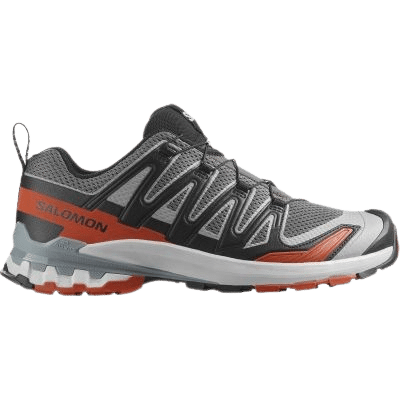
Men's Salomon XA Pro
Check current price, styles, and colors:
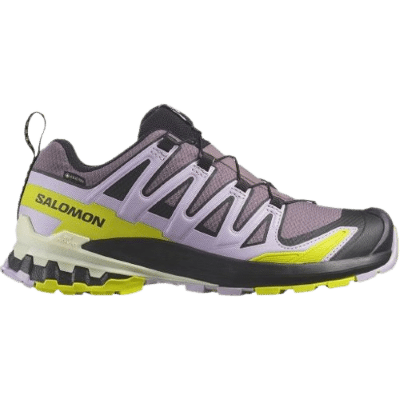
Women's Salomon XA Pro
Check current price, styles, and colors:
BROOKS CASCADIA 18
Protective Trail Running Shoe for Hiking
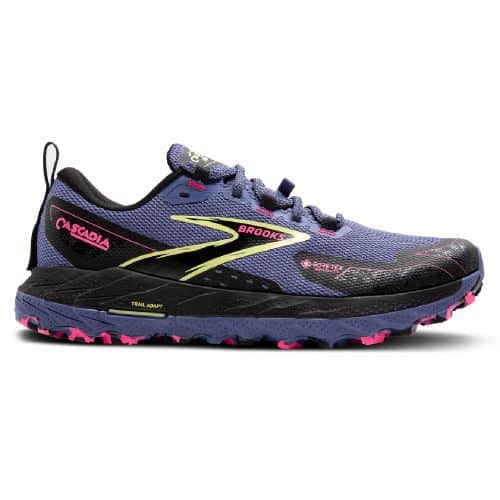
Main Benefits:
The Brooks Cascadia is another long-time best seller that's stiffer, heavier, and more supportive than most trail running shoes. That makes it a popular pick among day hikers and long-distance thru-hikers who don't want to lose too much support as they transition away from a true hiking shoe. Now in its 18th edition, the Cascadia has a sturdy but cushioned ride with 8mm drop and aggressive, chevron-shaped lugs that can dig into mud and steep terrain for clutch footing. I tested and reviewed a previous version in Pennsylvania and continue to wear it for desert day hikes in New Mexico. The Cascadia also has a roomier fit than other supportive trail runners, making it one of the best trail running shoes for hikers with wide feet.
Best Fit
standard to wide feet
Best Match
all-purpose hiking, thru-hiking

Men's Cascadia 18
Check current price, styles, and colors:

Women's Cascadia 18
Check current price, styles, and colors:
Mammut Sertig II
Sturdy yet Nimble Trail Running Shoe
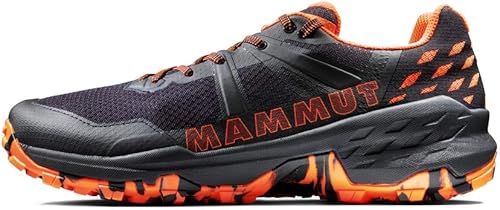
Main Benefits:
The Mammut Sertig II may be the best trail running shoe that most hikers don't know about. Made for the Swiss Alps, this trail runner is surprisingly sturdy without feeling heavy. It also has a thicker stack of EVA foam than the average trail runner, which takes the edge off its stiff, supportive build. I've been hiking in this shoe for six months and love how it supports my feet on moderate to tough trails. It's more supportive than some hiking shoes I own while being noticeably lighter and more athletic. If you prefer a stiffer trail running shoe for your hikes, this one gives you hiking shoe-like support at a trail runner weight. It's an impressive, high-performance trail shoe for hiking—and, yes, it looks sick, too!
Best Fit
standard feet (size up)
Best Match
moderate to hard hikes
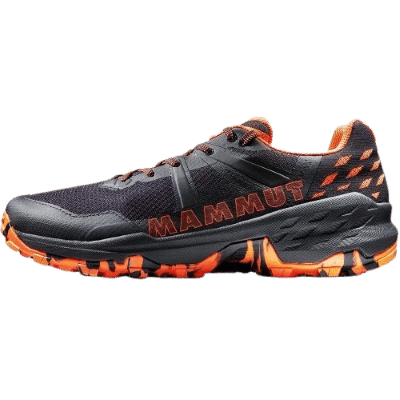
Men's Mammut Sertig II
Check current price, styles, and colors:
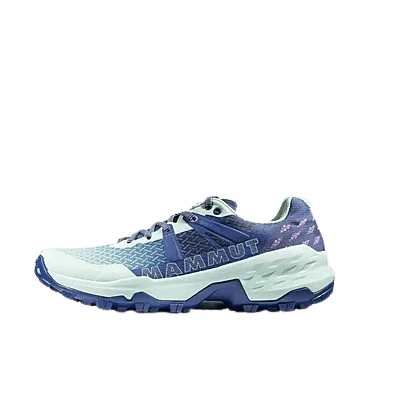
Women's Mammut Sertig II
Check current price, styles, and colors:
Comparing the best trail running shoes for hiking
I stand behind each of these trail running shoes. However, they also varied in terms of weight, support, and cushioning.
Weight
Each of these trail running shoes runs lighter than the typical hiking shoe. However, their weight also varies by up to 4 ounces per pair. I personally weighed each of these shoes when I tested and reviewed them.
- According to my measurements, the HOKA Speedgoat 6 (11.4 oz/shoe) was the lightest trail running shoe followed by the Topo Ultraventure 4 (11.7 oz), Salomon Ultraglide 2 (11.7 oz), Salomon Thundercross (11.9 oz), and Topo Traverse (12.1).
- The Brooks Cascadia (13.3) and La Sportiva Ultra Raptor II (15.4 oz) are the heaviest trail running shoes I recommend for hiking.
- The HOKA Speedgoat 6 (11.4 oz), Salomon Thundercross (11.9 oz), LOWA Fortux (12.4 oz), Mammut Sertig II (12.9 oz), and Topo Traverse (12.1 oz) offer the best balance between weight savings and support among trail running shoes.
Support
I evaluated each shoe's support on a series of test hikes and later wore shoes side by side—that is, one shoe on the right foot and another on the left foot—to compare their support and foot protection. In order, these were the most supportive trail running shoes that I reviewed:
- LOWA Fortux
- Salomon Thundercross
- Mammut Sertig II
- Topo Athletic Traverse
- Brooks Cascadia
Cushion
These top-performing trail running shoes also vary in their cushioning. HOKAS are known for their max cushion, but the HOKA Speedgoat 6 was the just 4th most cushioned trail runner on this list. Testing the cushiest trail runners shoes side by side on the same trails, here's how they ranked for cushioning:
- Topo Athletic Ultraventure Pro (most cushioning)
- Salomon Thundercross (plush cushioning)
- Salomon Ultra Glide 2 (plush cushioning)
- HOKA Speedgoat (firm cushioning)
- LOWA Fortux (stiff with max cushion)
- Mammut Sertig II (thick & responsive cushioning)
- Brooks Cascadia (thick & responsive cushioning)
- Topo Athletic Traverse 2 (moderate cushioning)
- Salomon XA Pro (moderate cushioning)
- Altra Lone Peak (moderate cushioning)
How to choose the best trail running shoes for hiking
Trail running shoes have exploded in popularity over the past five years or so. Most of this growth has come from hikers.
You'll have to make your own choice when it comes to choosing hiking boots vs hiking shoes vs trail running shoes. As the saying goes, "hike your own hike." Wear what you want.
However, it's important to understand the trade-offs for each type of footwear. That's especially true for trail running shoes since they're not made for hikers.
A pair of trail runners may run 6-12 ounces lighter than a pair of hiking shoes—and weigh almost half as much as today's backpacking boots. On the flip side, trail runners may be sturdier than road running shoes, but they provide less support, foot protection, and durability than hiking boots and hiking shoes. It's up to you to balance the trade-offs between weight savings and support.
Working in the outdoor industry, it's been my experience that these groups of hikers are more likely to be happy wearing trail running shoes for hiking:
The average day hiker and backpacker often prefers true hiking shoes and hiking boots for their superior stability and support, weather protection, and durability. Likewise, hardcore hikers often pass on trail running shoes if they mostly hike moderate to difficult mountain terrain—or, they'll switch to hiking boots for colder and wetter weather.
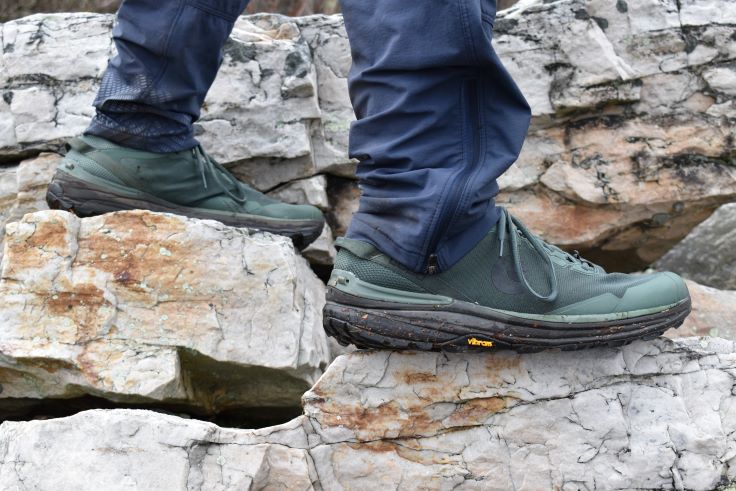
Testing the new Topo Traverse in 2024
weight savings = energy savings
Why are trail running shoes the big trend in hiking footwear? The main reason is weight savings. Less weight on your feet may save you some energy—if you hike fast enough and far enough.
However, it's a myth that weight on your feet is five times worse than weight on your back. Empirical studies suggest the average hiker doesn't hike fast enough for weight to matter much on their feet. And, honestly, lighter shoes won't make a significant difference on shorter hikes.
Weight matters. But it matters most for fast hikers and long-distance hikers. Saving a few ounces may not matter if you only hike an hour or two. However, it may save significant energy on the Appalachian Trail or Pacific Crest Trail, where thru-hikers rack up 15- to 20-mile days for months at a time.
Trail running shoes may be more comfortable for some hikers, too. Some hikers prefer the feel of trail-runners because they're lighter and more flexible than hiking boots or hiking shoes. Made with light-weight mesh, trail running shoes also provide better ventilation and dry out quickly. That’s a bonus on multiday hikes, where you don't have off days for your shoes to dry.

Fast hikers save more energy in lightweight trail running shoes
weight savings vs support and durability
However, weight savings also has its costs.
Trail running shoes are not as tough as hiking shoes. That is, their ankle support, foot protection, and durability lag behind hiking shoes (and hiking boots). That may not matter much on easy terrain. But hiking in trail running shoes may increase your risk for lower body injuries, especially if you're
There are also economic and environmental costs to lightweight trail running shoes. Most trail runners are designed to be replaced every 250-300 miles. (They may last longer than that—or less than that—depending on your weight, gait, the terrain you hike, etc.) That's hundreds of miles less than most hiking boots and hiking shoes.
Not too long ago, trail running shoes were noticeably cheaper than hiking shoes. Now, they're close to the same price as hiking shoes (and don't last as long). That means trail runners are more expensive than true hiking shoes long-term because you'll need to buy more of them. Their reduced durability also results in more shoes in landfills—an environmental cost of hiking in trail running shoes.
how to fit trail running shoes for hiking
Once you've decided on trail runners, fit should be your first priority. After all, the best trail running shoes will suck If they don't fit your feet. Unfortunately, plenty of hikers and backpackers buy footwear that doesn't fit.
The best way to buy trail runners that fit is to get fitted at your local hiking shop, running shoe, or REI— not a sporting goods chain store. If that's not an option right now, here are some pro tips from my fitting experience:
Most hikers should choose trail runners with approximately 1/2" of room between your longest toe and the end of the boot—roughly the width of your finger (men) or thumb (women). This half-inch clearance (1) accommodates foot swelling (especially on longer hikes) and (2) prevents your toes from hitting the end of the boot on steep descents (which leads to injuries and lost toe nails).
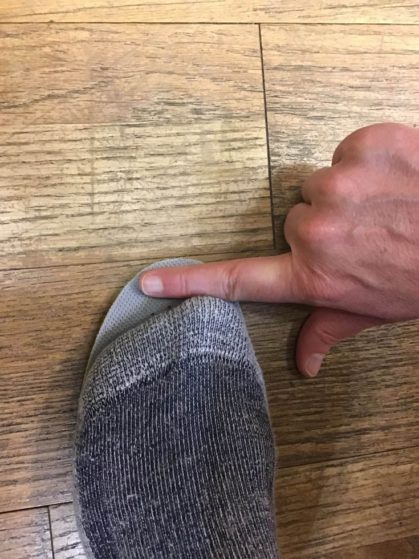
Your hiking size probably will be be a half-size or full-size larger than your everyday shoe size. However, the key is following the advice above, not simply sizing up. For more, please check out Hiking Feet's sizing and fitting guide for hiking.
My mini-reviews will also help you choose hiking shoes with the correct width for your hiking feet. See my notes on "best fit" above to find trail runners with narrow fits, standard fits, wide fits, and wide toe boxes.
waterproof vs non-waterproof trail running shoes
Most experienced hikers do not choose waterproof trail running shoes.
Here's why. It might seem obvious that a waterproof shoe would keep your feet drier in damp environments. At most, though, a trail-runner only provides a couple inches of water protection. That may stand up to a shallow puddle or dew on mowed grass. But that's about it.
At the same time, waterproof shoes have two key drawbacks for hikers:
That's why many experienced hikers— especially thru-hikers— tend to pair non-waterproof trail running shoes with (quick drying) merino wool-blend socks. That combination may keep many hikers' feet cooler and drier than waterproof shoes, especially if you're hiking fast and/or hiking long distances (which build up more body heat).
That being said, many hikers also choose waterproof trail running shoes. That makes sense if you live in cool and damp environments, hike in winter conditions, or walk a lot on mowed, grassy trails where there's frequent dew, frost, and puddles. For the most reliable and breathable waterproofing, choose trail running shoes with GORE-TEX or eVent membranes.
Among my recommendations, the Salomon Thundercross GTX, Hoka Speedgoat GTX, Salomon XA Pro GTX , and La Sportiva Ultra Raptor II GTX are waterproof-breathable GORE TEX ("GTX") options while the Altra Lone Peak All-Weather features highly breathable eVent waterproofing. For more on waterproofing and breathability, please check out my post on waterproof vs non-waterproof hiking footwear.
buying the best trail running shoes for hiking
The trend towards trail running shoes may be a good one for many hikers, especially if you hike fast and light. The trail-runners I've recommended here have strong reputations with pros in the outdoor industry. At least one of them should be a good match for your feet and your style of hiking. I can vouch for the ten shoes above—I've personally hiked in each of them.
Are you ready to pull the trigger on a new pair of trail runners?! If this post helped you decide, please consider buying your next pair through the affiliate links above. Hiking Feet may receive a small commission (at no cost to you) from Backcountry or REI—the best outdoor specialty retailers in the U.S. These commissions fund this site (and compensate me for the hundreds of unpaid hours I spent creating free content to help you buy the best footwear for you.)
If this site hooked you up, please consider hooking me up, too. Thanks, I appreciate it!
